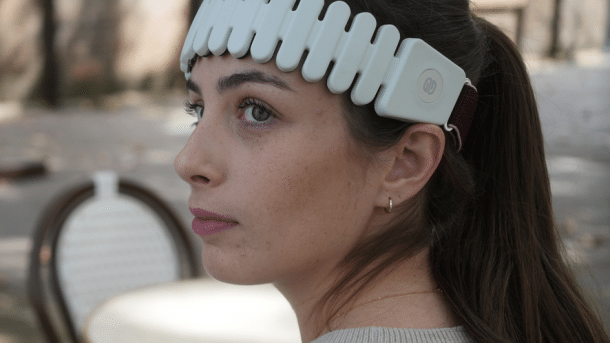Tech instead of Ritalin: start-up wants to relieve ADHD symptoms with a wearable
The Australian start-up Neurode wants to use a wearable to track and alleviate the symptoms of ADHD patients.

The Australian start-up Neurode wants to track and alleviate ADHD symptoms with a wearable.
(Image: Screenshot: Neurode)
According to a survey conducted in 2020, more than 366 million adults worldwide have ADHD. Apart from prescription drugs such as Medikinet, commonly known as Ritalin, there are few treatment options for sufferers. Although behavioral therapies and certain lifestyle adjustments can also help to alleviate symptoms, the condition can make both more difficult.
The Australian start-up Neurode wants to open up new treatment options with a wearable. A headband is designed to detect and treat ADHD symptoms, such as concentration difficulties. Light is used to monitor brain activity; to alleviate symptoms, the prefrontal cortex is stimulated with gentle electrical stimuli. According to the US online medium Techcrunch, some users feel a slight tickle, while others don't notice anything at all.
Neurode founder Nathalie Gouailhardou has had an ADHD diagnosis herself since she was five years old. She told Techcrunch that medication had never really helped her. In her case, side effects such as sleep disorders and increased anxiety always outweighed the potential benefits.
The neuroscientist came up with the idea for the wearable while working with functional near-infrared spectroscopy (fNIRS) devices in a medical research lab. These non-invasive optical imaging neuroscientific instruments are equipped with light sources and sensors and are placed on the head like a headband. Active parts of the brain require more oxygen and blood flow increases there. The headband sends near-infrared light through the brain via the scalp and skull. The blood in the brain absorbs and scatters the light depending on the oxygen content. Sensors record the backscattered light, which allows conclusions to be drawn about brain activity. The devices are comparatively inexpensive, have no side effects and can be used in real-life situations with a high degree of freedom of movement, which is why fNIRS is used in sports psychology research or research on children, for example in studies on language acquisition.
Wearable for home use
Gouailhardou wanted to take the technology out of the lab and use it to treat ADHD. She founded Neurode in 2021 together with her friend and co-founder Damien Sofrevski. They filed a patent application for the headband in the same year. Since then, Neurode has raised 3.5 million dollars in investor funding, which the start-up is using for clinical trials. The device is currently being tested in a closed beta. Gouailhardou hopes that the device will receive FDA approval, but there is no timetable for the application yet.
An employee of venture capital firm Khosla Ventures told TechCrunch that his company invested in Neurode because the ADHD treatment was ripe for innovation. Ritalin was developed during the Second World War. He also liked the fact that the device was designed for home use. After all, the best scientific methods would be useless if people couldn't use them.
The idea of relying on electrical stimulation of the brain instead of medication is not new. In Germany, for example, the "Noninvasive Brain Stimulation Lab" working group at the Department of Neurology at the University Medical Center Göttingen is researching the development of methods for non-invasive brain stimulation. In an interview with heise online, the head of the working group, Andrea Antal, said that non-invasive brain stimulation has been used for years to improve the symptoms of depression sufferers or pain patients, for example. In her studies, 70 to 80 percent of patients showed an improvement. She also considers the approach to be potentially effective in alleviating ADHD symptoms.
Despite the minor side effects, electrical stimulation is currently not widely used. According to Antal, regulations complicate its use. In principle, these forms of therapy are private services. Only in inpatient treatment is magnetic, but not electrical, brain stimulation covered by health insurance companies. One of the reasons for this is the comparatively sparse study situation.
In the USA, a device for home use was FDA-approved in 2019 that is intended to reduce ADHD symptoms in children through gentle electrical stimulation of the trigeminal nerve.
(kst)